Spiny lobsters (family Palinuridae) are not ‘true lobsters’ (family Nephropidae), but along with the true lobsters and the Polychelida form what appears to be a monophyletic clade. The extinct Eryon is also in this clade. In my last blog review I showcased a pair of AAA Maine lobsters and briefly discussed AAA’s casting of actual specimens to produce some of their figures. Today we will be looking at a spiny lobster that was also undoubtedly cast from an actual specimen. The two main genera of spiny lobsters are Panulirus and Palinurus. The genus Palinurus occurs in the Atlantic and Western Indian Oceans and the Mediterranean sea and contains the common spiny lobster, P. elephas. Panulirus is most common in the Indian and Pacific Oceans, although a couple species also occur in the West Atlantic. This AAA model appears to be cast from a member of the genus Panulirus, for which there are roughly 22 described species. Specimens for these casts were probably acquired from local wet markets and several members of the genus Panulirus are eaten for food in Asia. Looking at a variety of characters online I have come to the tentative conclusion that this model was cast from a specimen of P. japonicus, the Japanese spiny lobster, but I also considered P. pencillatus (pronghorn spiny lobster) and P. longipes (longlegged spiny lobster).
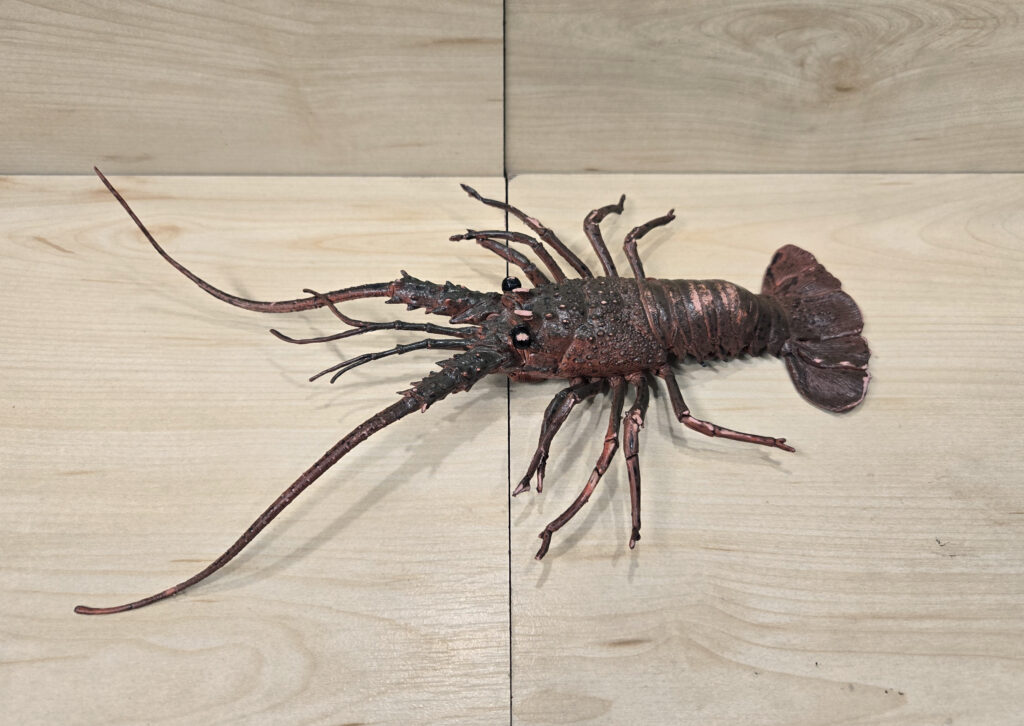
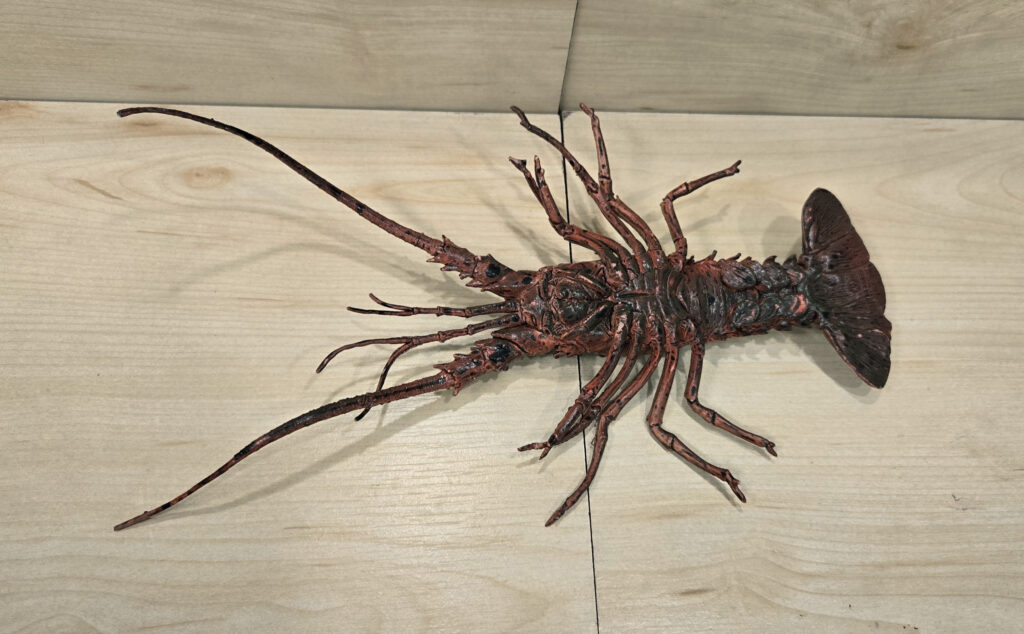
Minus appendages, the figure is about 15 cm long, which is below the maximum size of most commercially-caught Panulirus species. The original specimen must have been a younger individual. Today’s figure would scale 1:1.6-1:2 for a mature individual of P. japonicus.
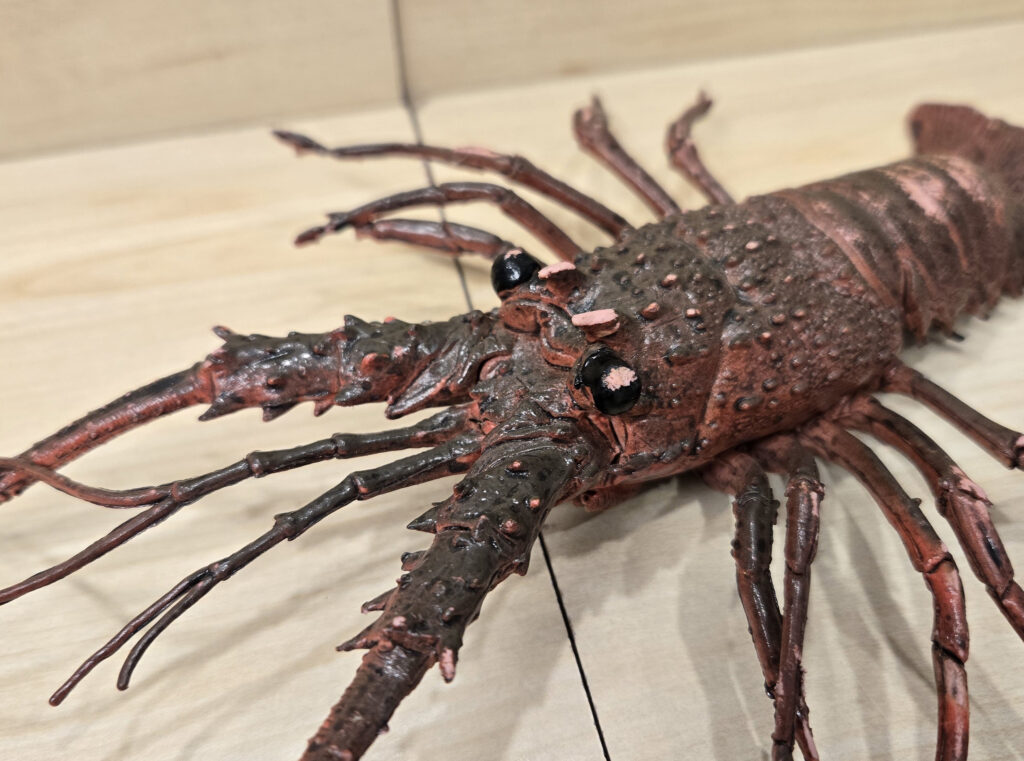
Like other AAA models, there are at least two sizes of spiny lobster, and mine here appears to be the smaller of the two! As with the Maine lobsters, not much to say about the quality of sculpt of a figure cast from an actual specimen.
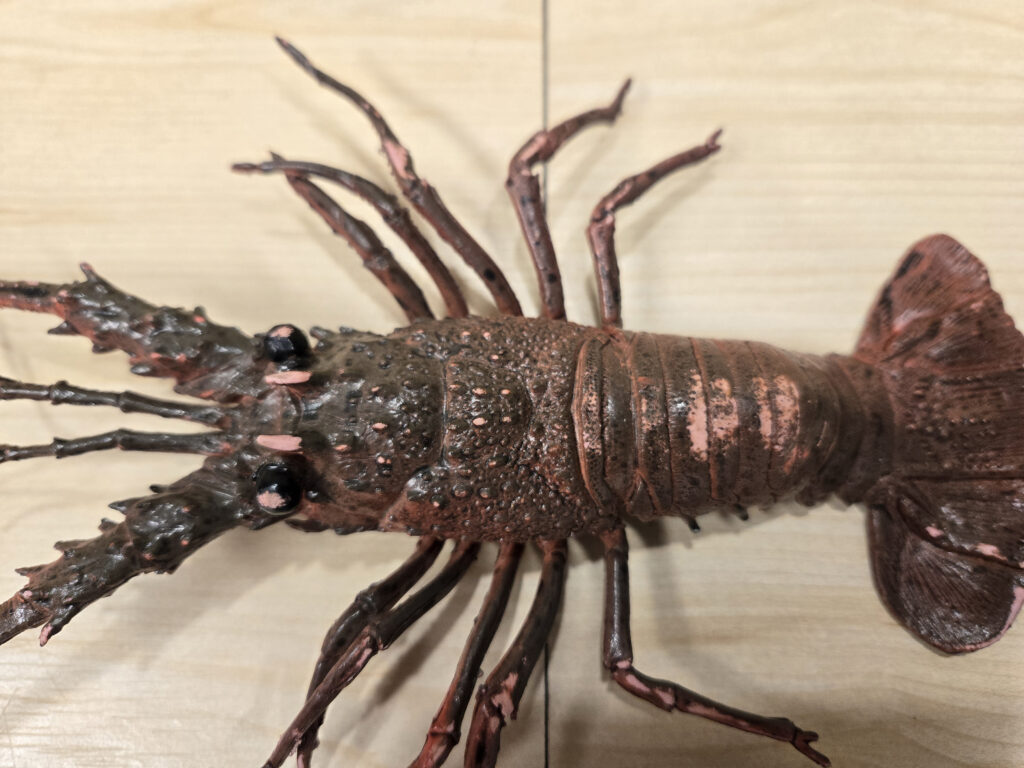
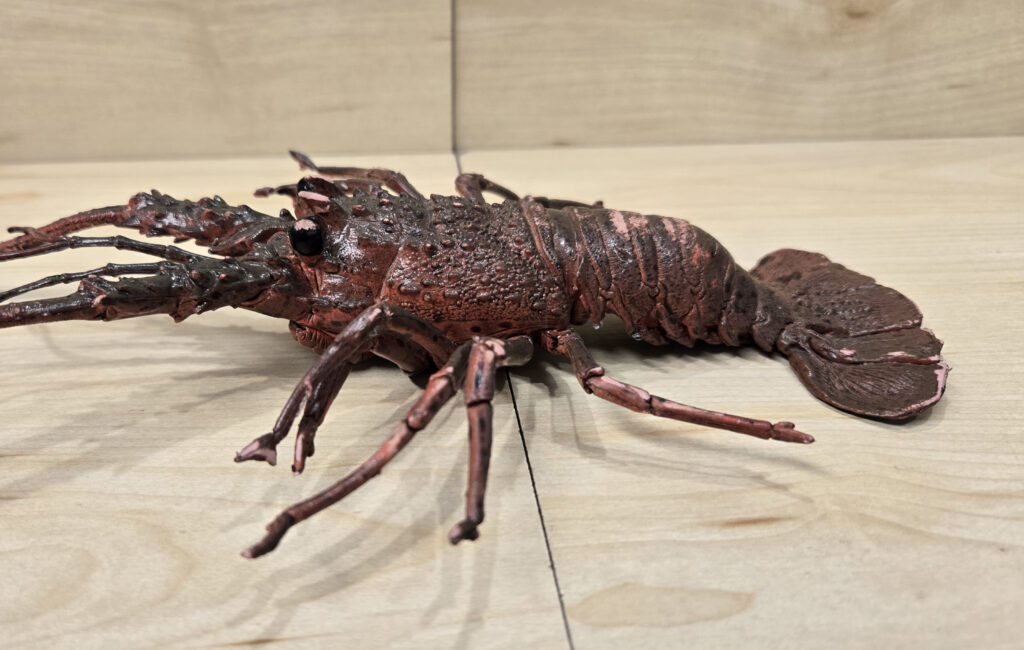
The base color appears to be a pinkish-red, with a darker green-brown painted over it. Mine was bought recently on eBay and has noticeable scuff marks revealing the pinkish underpaint. The only other color is that the eyes are black.
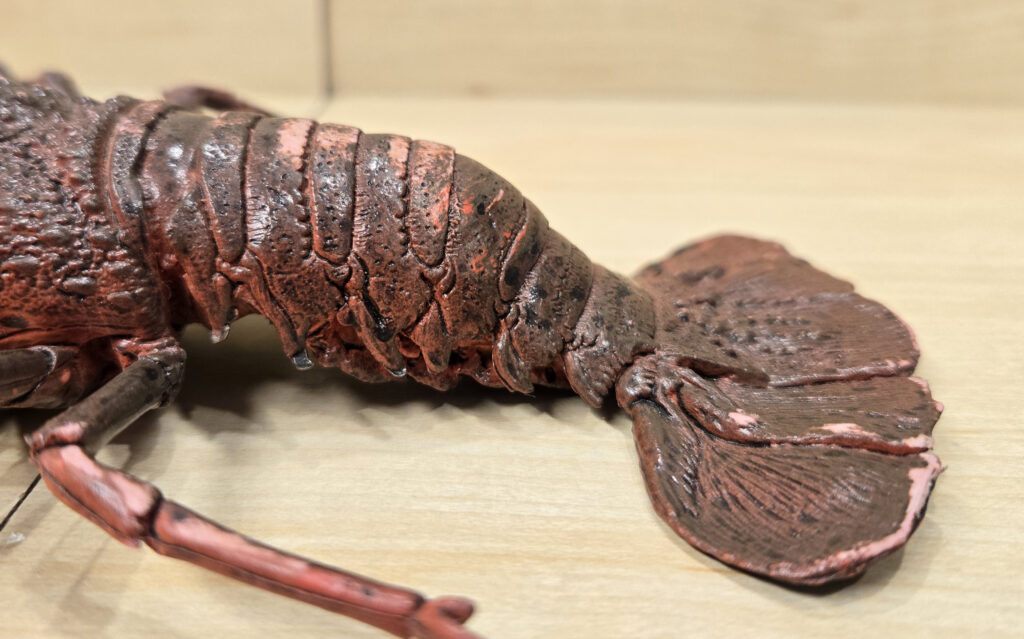
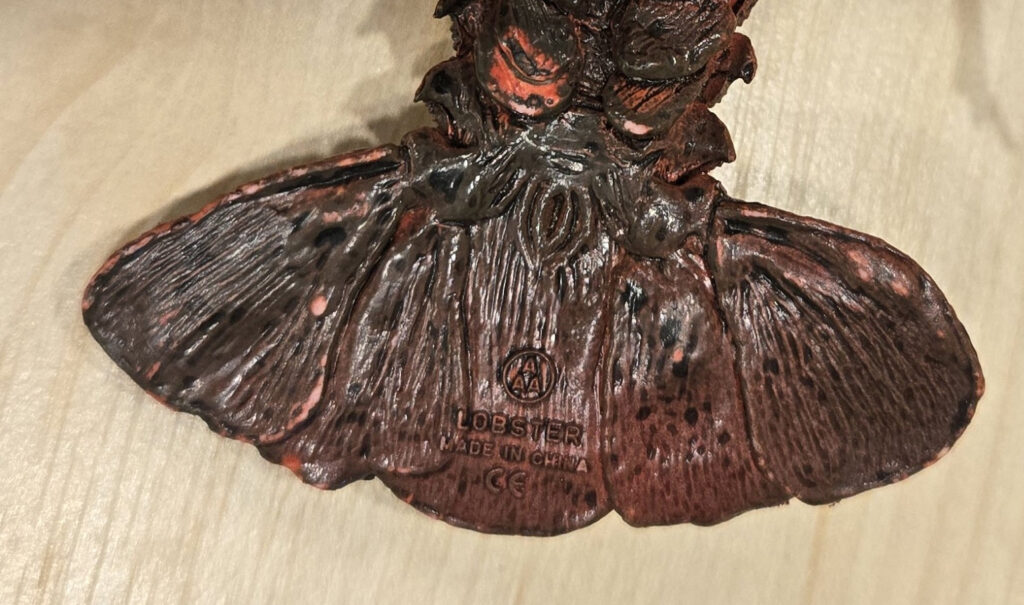
I don’t have a lot of AAA figures, and most of them that I do have are mollusks and crustaceans, and I believe all if not most are cast from actual specimens. I am not sure when these were first produced, possibly as early as the 1980s, but they are long retired by now. They do pop up on eBay periodically. One thing I want to point out, is that AAA figures are often prone to becoming ‘sticky’ over time. While this hasn’t happened yet with this spiny lobster, my smaller Maine lobster, mantis shrimp, large Dungeness crab, large giant mud crab, or large tiger prawn, it has for my large Maine lobster. Since the phenomenon appears to be random, I suspect it has something to do with PVC quality in one or more specific factories.
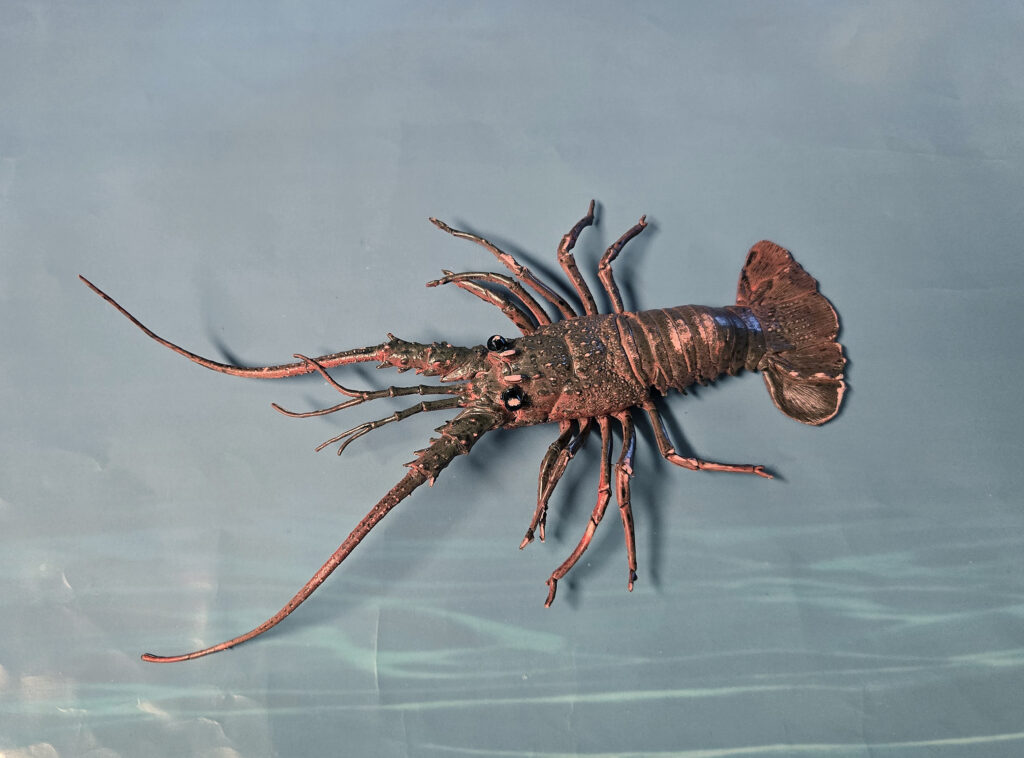
Disclaimer: links to Ebay and Amazon on the AnimalToyBlog are affiliate links, so we make a small commission if you use them. Thanks for supporting us!




Oh I had this model when I was very child, I lost it many years ago. I remember my mother bought it for me in the gift shop of the Barcelona aquarium, and I tried a joke by putting it over the “paella” (typical Spanish dish of rice with seafood) that my grandmother prepared next day 😛